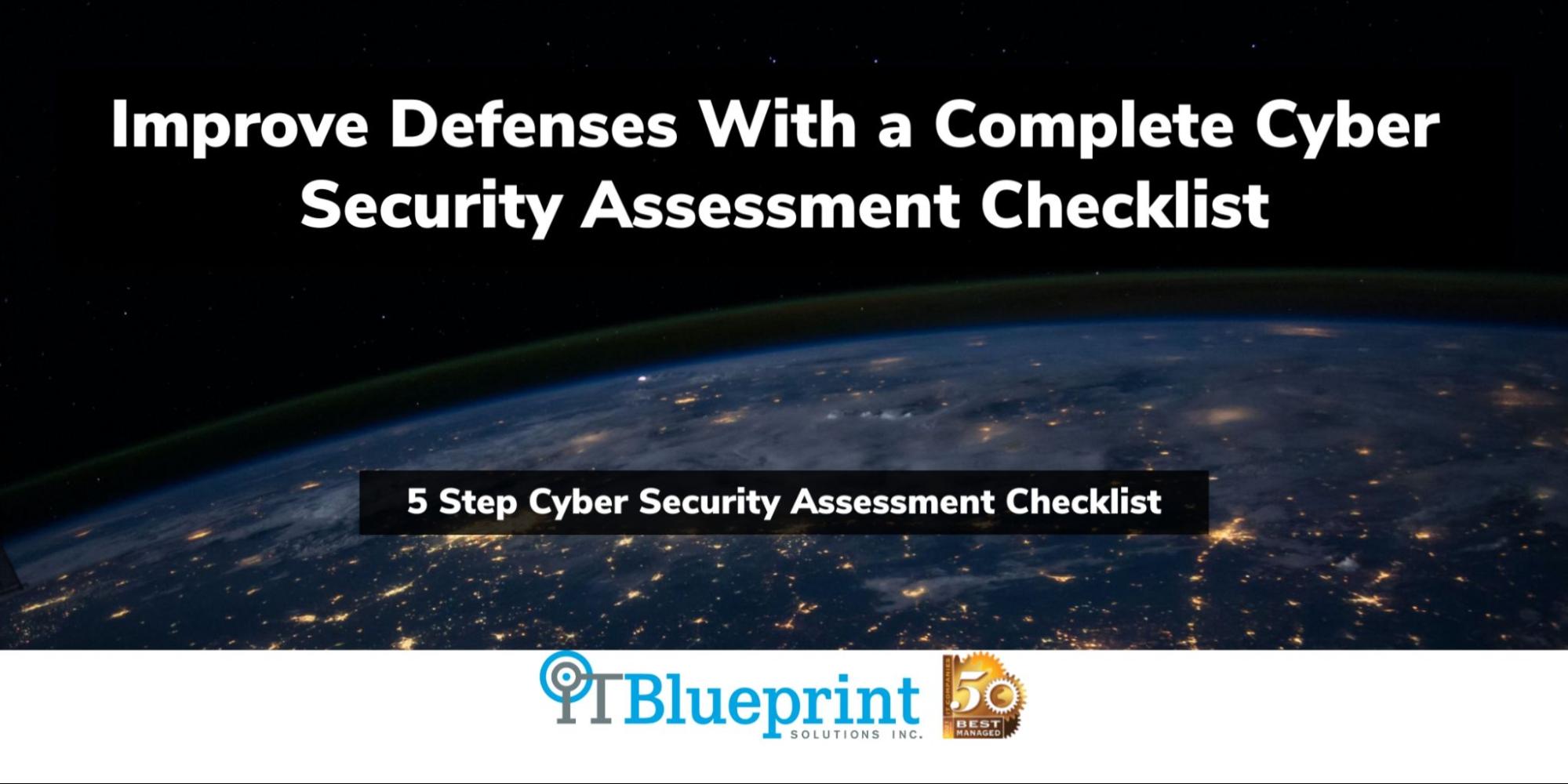Organizations are leveraging a cyber security risk assessment checklist to minimize risks.
As recent statistics reveal, U.S. businesses are the most targeted entities of cyber attacks. With cyber threats becoming more sophisticated and dangerous, safeguarding infrastructure, data, and users have become a pressing priority for businesses – and a costly challenge.
For these reasons, many businesses implement what is known as a cyber security risk assessment. For more information regarding how to create a complete threat assessment checklist for cyber security, this blog will cover:
- What is a Cyber Security Risk Assessment Checklist
- Why a Cyber Risk Assessment Plan is Important
- What Should be Included in a Cyber Security Risk Assessment Checklist
- How to Create a Cyber Risk Assessment Checklist in 5 Steps
- And more
What is a Cyber Security Risk Assessment?
A cyber security risk assessment is a comprehensive evaluation and analysis of an organization’s technology infrastructure and security controls to identify potential threats and vulnerabilities. This process helps organizations prioritize risks and implement appropriate mitigation strategies, such as:
- Reviewing and updating access control policies
- Testing for vulnerabilities in network infrastructure
- Evaluating employee awareness and training programs
Can You Afford $4.35 Million In Data Breaches?
Discover how iTBlueprint helps organizations simplify access without compromising security. Safeguard your business today.
The Rise and Impacts of Cyber Crime
As technology continues to advance and become more integrated into daily lives, the potential for cyber attacks and data breaches also increases.
These incidents can result in lost or stolen sensitive data, financial loss, damage to a company’s reputation, and even legal consequences. Among the most dangerous cyber attacks are:
- Ransomware
- Phishing scams
- Social engineering attacks
Conducting a thorough cyber security risk assessment can help organizations identify and address potential weaknesses before they are exploited by malicious actors. This can ultimately save the company’s reputation, time, money, and resources.
That is why it is crucial for organizations to stay on top of potential threats and conduct routine cyber security risk assessments.
Why Is a Cyber Security Risk Assessment Checklist Important?
Cyber attacks are becoming increasingly common, with data breaches causing significant financial losses and reputation damage for affected organizations.
A cyber security risk assessment helps identify vulnerabilities in an organization’s technology and security infrastructure, allowing them to implement appropriate mitigation strategies before a breach occurs.
Cheaper than paying for a data breach, which now averages $9.44 million in the United States, the cost of a cyber security risk assessment can vary depending on the size and complexity of an organization’s technology infrastructure and averages between $15,000 to $40,000.
Additionally, many industries have regulatory requirements for conducting cyber security risk assessments that must be upheld. Failure to do so can result in:
- Legal penalties
- Exorbitant fines
- Loss of licensing
- And more
Pros and Cons of a Cyber Security Assessment Checklist
Understanding the pros and cons of a threat assessment checklist for cyber security helps businesses create a risk assessment plan that’s customized to meet specific needs. Among the leading benefits of deploying a cyber risk assessment checklist includes:
- Identifying and addressing potential vulnerabilities
- Demonstrating compliance with industry regulations and standards
- Building trust with customers by showing a commitment to data security
- Improving protection of valuable assets, like sensitive data and intellectual property
- Minimizing the impact and financial loss of a breach or attack
Without a cyber security assessment framework, it’s easy for security gaps to materialize across an organization’s infrastructure, network, and technology. However, there are some disadvantages of a cybersecurity assessment to keep in mind, which includes how:
- It can be time-consuming and expensive
- The assessment may not cover all potential risks
- There is potential for false positives or missed threats
- A risk assessment is only effective if implemented correctly and consistently maintained
- Outside experts may not understand the organization’s specific technology infrastructure
What a Cyber Security Risk Assessment Checklist Should Include
A cyber security risk assessment plan should be comprehensive and provide significant scope into an organization’s infrastructure and processes. For companies seeking better data protection, every risk assessment plan for cybersecurity should:
- Review and update access control policies
- Test for vulnerabilities in network infrastructure
- Evaluate employee awareness and training programs
- Conduct risk assessments on third-party vendors
- Test disaster recovery plans
- Regularly review security protocols and make necessary updates.
5 Steps for a Cyber Security Risk Assessment Checklist
Every business has unique needs, goals, and budgets. To create a framework for a cyber security risk assessment, ensure the cyber security assessment checklist includes revolves around the following 5 steps:
- Locate and prioritize assets
- Identify threats and vulnerabilities
- Determine likelihood and impact of risks
- Develop mitigation strategies
- Implement and monitor risk management plan
Why do Businesses Need a Cyber Security Risk Assessment?
With the increasing dependence on technology in today’s digital age, it is crucial for organizations to proactively assess and address potential cybersecurity risks. This can prevent costly data breaches and protect sensitive information, ultimately preserving an organization’s reputation and financial stability.
Who Should Create a Cyber Security Risk Assessment Plan?
It is important for organizations to have a dedicated security team or individual responsible for assessing and managing cybersecurity risks. This may include IT professionals, risk management specialists, and management.
Additionally, it can be beneficial to consult with external experts or utilize specialized software to conduct thorough and comprehensive assessments.
Overall, having a strong cyber security risk assessment plan in place is critical for protecting an organization’s valuable assets and avoiding the potentially devastating consequences of a data breach.
For more relevant information, visit these related blogs: |
Create a Cyber Security Assessment Checklist With iTBlueprint
Conducting a cyber security risk assessment is a must-have for organizations to protect their assets and mitigate potential risks. Without an assessment, organizations lose footing on their cyber security posturing, weaknesses, and biggest threats.
Now is the time for businesses to prioritize cybersecurity and invest in a comprehensive risk assessment. Having serviced more than 180 customers and holding more than 25 industry certifications, iTBlueprint has been a reliable cybersecurity company for more than 18 years.
Contact our team of experts to learn more about how we can help secure your organization’s future.
Remember, it’s always better to be safe rather than sorry when protecting your business from cyber attacks. Don’t wait until it’s too late – take action now.





